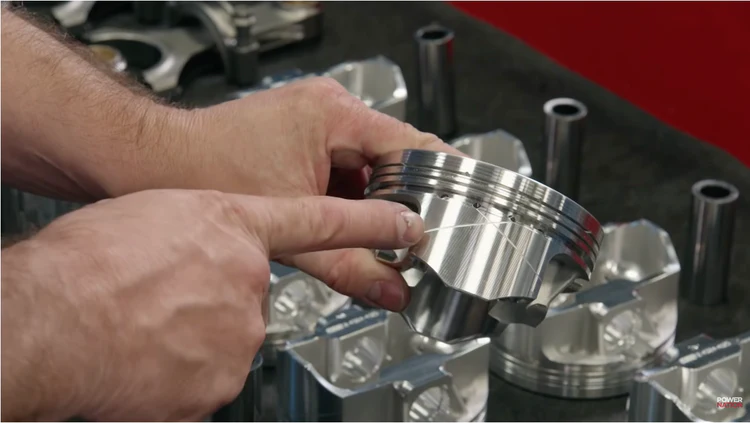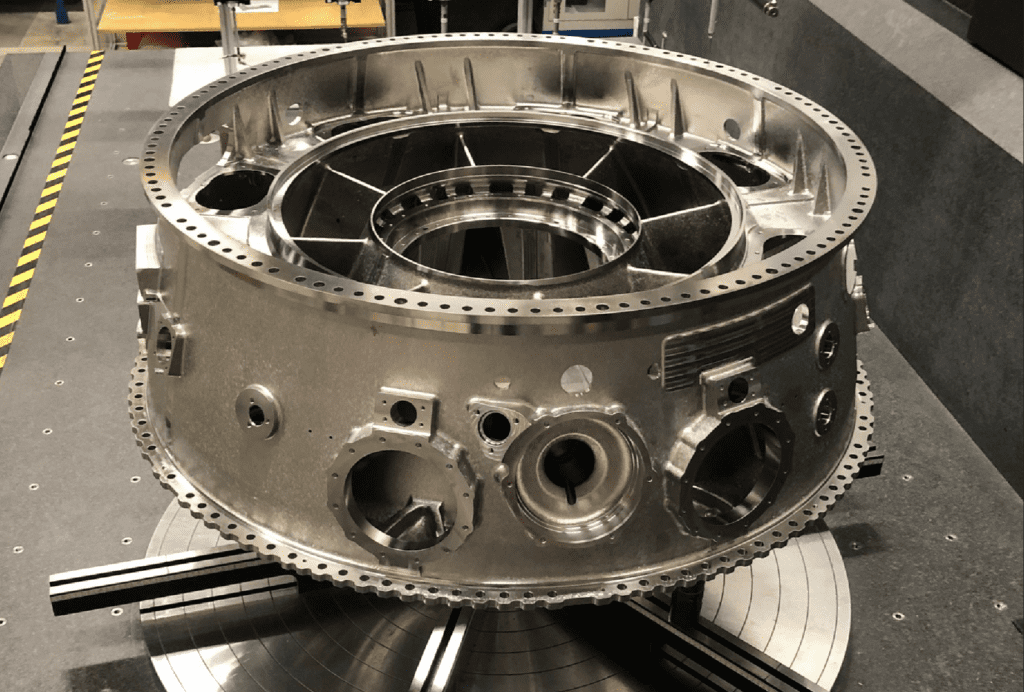
The aerospace industry demands an unparalleled degree of precision and consistency. To meet these high standards, manufacturers often turn to CNC (Computer Numerical Control) machining. This advanced technology enables the production of complex, custom parts with utmost precision, a critical necessity in aerospace applications.
This article will delve into various aerospace parts that can be crafted using CNC machining, showcasing this technology’s impressive capabilities.
The Basics of CNC Machining
CNC machining has redefined the manufacturing landscape. This advanced technology leverages computerized systems and machine tools to create parts that are both complex and high precision.
What Are the Key Features of CNC Machining?
CNC machining stands out due to its unique features and benefits. Here are a few of its key characteristics:
- High precision and consistency: With CNC machining, the chances of human error are minimized. This technology guarantees a high level of precision and consistency, essential in aerospace manufacturing.
- Ability to produce complex designs: Complex geometries that are challenging with manual operations are achievable with CNC machining. Its ability to handle complex designs is one reason why it’s favored in the aerospace industry.
- Ideal for both prototype development and mass production: Whether it’s for producing a single prototype or a large volume of parts, CNC machining provides scalability. Manufacturers can easily adjust the production volume as per their needs.
Essential Aerospace Parts Made With CNC Machining
CNC machining finds its application in creating various essential components in the aerospace sector.
1. Engine Components

Pistons machining

Turbine Blades machining

Compressor Cases Machining
The aircraft engine comprises numerous intricate parts, many of which owe their existence to CNC machining. These include pistons, turbine blades, and compressor cases, among others. Here’s a snapshot:
- Pistons: These are crucial parts of the engine cylinder. They need to be precise and robust, making CNC machining an excellent manufacturing method.
- Turbine Blades: With their complex shapes and high operational demands, turbine blades are ideally manufactured using CNC machining.
- Compressor Cases: CNC machining helps produce compressor cases that can withstand high pressure and temperature conditions.
2. Landing Gear Parts
The landing gear is a vital system in an aircraft. The following are some of the key components of a landing gear made using CNC machining:
- Main Struts: These support the weight of the plane during landing. CNC machining ensures the necessary precision and strength.
- Torque Links: These prevent the landing gear from rotating while providing flexibility. Again, the precision and strength offered by CNC machining make it ideal for producing torque links.
3. Aircraft Structural Components
The structural parts of an aircraft, such as wing spars, fuselage frames, and seat frames, are created using CNC machining. These parts need to be lightweight and strong, characteristics that CNC machining can guarantee.
- Wing Spars: These structural elements hold the wings in place. CNC machining can produce these critical components with the required strength and precision.
- Fuselage Frames: As the main body of the aircraft, the fuselage needs to be robust. CNC machining can produce strong, lightweight frames.
- Seat Frames: Passenger and crew safety is paramount. CNC machining helps create durable and safe seat frames.
Advantages of CNC Machining in Aerospace Parts Manufacturing
The adoption of CNC machining in aerospace manufacturing is not a coincidence. This technology offers numerous benefits that align with the industry’s stringent requirements.
| Key Characteristics | Description |
|---|---|
| High Precision and Accuracy | CNC machining can produce parts with tolerances as tight as +/- 0.001 inches, ensuring all components are manufactured to exact specifications and eliminating the risk of human error. |
| Scalability | CNC machining is suited for both mass production and small-scale manufacturing and prototyping, allowing manufacturers to produce a few prototypes to test their designs before ramping up production, without having to invest in expensive tooling or molds. |
| Material Versatility | CNC machining can handle a wide range of materials, including lightweight aluminum, durable titanium, high-grade plastics, and composites, allowing manufacturers to choose the best material for each component based on its intended use and performance requirements. |
Challenges and Solutions in CNC Machining of Aerospace Parts
CNC machining has emerged as a highly beneficial technology that has enabled manufacturers to achieve greater efficiency, accuracy, and precision in their operations. Despite these advantages, it is important to acknowledge that there are some challenges associated with this technology. One of the most significant hurdles is the high initial setup cost, which can be a major deterrent for smaller businesses or those with limited budgets. In addition, the complexities of programming and operating the machines can also pose a challenge, especially for those who are not familiar with the technology.
However, it is worth noting that the manufacturing industry has made significant strides in addressing these challenges. For example, manufacturers like Prolean have invested in research and development to create innovative solutions that help to lower the cost of CNC machining while also simplifying the programming and operation of the machines. Such efforts have helped to make CNC machining more accessible and attractive to a wider range of businesses, thereby promoting its adoption and use.
Overall, while there are certainly some challenges associated with CNC machining, it is clear that the benefits far outweigh the drawbacks. With the right investment and support, businesses can leverage this technology to achieve greater productivity, efficiency, and profitability, and stay ahead of the competition in today’s fast-paced manufacturing landscape.
The Role of CNC Machining in Aerospace Industry Sustainability
Sustainability has become a priority in virtually every industry, including aerospace. Here’s how CNC machining plays a role in enabling sustainable practices in aerospace manufacturing:
1. Efficient Use of Materials
CNC machining is a subtractive manufacturing process, meaning it carves out a part from a larger block of material. With precise computer control, this process can minimize waste by ensuring the most efficient use of materials. It can significantly reduce the amount of scrap metal produced during manufacturing, contributing to sustainability goals.
2. Energy Efficiency
Modern CNC machines are designed to consume less energy. The machines can go into a low-power state when not in operation, reducing their energy usage. By making the manufacturing process more energy-efficient, CNC machining helps aerospace manufacturers decrease their carbon footprint.
3. Longevity of Parts
The high precision and consistency of CNC machining result in components with superior quality and durability. When parts last longer, the need for replacement is reduced, leading to less demand for new materials and energy for manufacturing. Thus, CNC machining indirectly contributes to sustainability by enhancing the longevity of aerospace parts.
Quality Assurance and CNC Machining in Aerospace Parts Manufacturing
In the aerospace industry, quality is not just a priority—it’s a necessity. Let’s delve into how CNC machining contributes to the high-quality standards of aerospace parts.
1. Consistent Quality
With CNC machining, every part is produced based on the same computerized design, ensuring consistency. Each piece will match the original design to a very high degree of accuracy, ensuring that every part will perform as expected in critical aerospace applications.
2. Excellent Surface Finish
CNC machining can achieve excellent surface finishes. This is crucial in the aerospace industry, where smooth surface finishes can impact aerodynamics and the overall efficiency of an aircraft.
3. Advanced Quality Inspection
With the integration of advanced quality inspection technologies, such as coordinate measuring machines (CMM) and laser scanning, the quality of parts manufactured through CNC machining can be assessed with extreme accuracy. These technologies ensure that any discrepancies from the original design are detected and corrected before the parts are used in an aerospace application.
4. Prolean’s Quality Assurance
Prolean’s quality assurance extends to every aspect of its CNC machining services. The company employs state-of-the-art quality inspection technologies to ensure that all parts meet or exceed industry standards. It also maintains rigorous control over the entire manufacturing process, from initial design to final inspection, to ensure the highest level of quality and reliability.
The Future of CNC Machining in Aerospace Parts Manufacturing
As technology continues to evolve, the role of CNC machining in aerospace parts manufacturing is poised to become even more significant. With the integration of cutting-edge technologies such as Artificial Intelligence (AI) and the Internet of Things (IoT), the possibilities for optimizing and streamlining the CNC machining process are seemingly endless. By incorporating AI into the CNC machining process, manufacturers can leverage powerful algorithms and machine learning to automate and optimize key processes, leading to increased efficiency and accuracy.
Meanwhile, IoT devices can provide real-time monitoring and adjustments, further enhancing the precision and efficiency of CNC machining. Overall, the future of CNC machining in aerospace parts manufacturing looks incredibly promising, thanks to the continuous advancements in technology and the increasing focus on innovation and optimization in the industry.
Conclusion
CNC machining has had a tremendous impact on the aerospace industry by introducing a level of precision, scalability, and versatility that was previously unattainable. With CNC machining, aerospace manufacturers can produce complex parts that are both accurate and consistent, which is critical for ensuring the safety and reliability of aircraft components. CNC machining has also enabled manufacturers to produce parts in larger quantities without sacrificing quality, which has helped to reduce costs and improve efficiency.
As we look to the future, advancements in technology and the continued growth of companies like Prolean will undoubtedly push the boundaries of what is possible with CNC machining. With new software, materials, and techniques being developed every day, the potential for further innovation in this field is limitless. From reducing lead times and increasing throughput to improving part quality and reducing waste, CNC machining will undoubtedly continue to play a critical role in the aerospace industry for years to come.
FAQs
What is CNC machining and why is it used in aerospace parts manufacturing?
CNC machining is a process where computer software controls the movement of factory tools and machinery, creating parts with a high level of precision. It’s used in aerospace parts manufacturing due to its ability to produce complex parts to exact specifications.
What are some of the aerospace parts manufactured using CNC machining?
Various engine components, landing gear parts, and structural components of an aircraft are manufactured using CNC machining.
What are the advantages of CNC machining in aerospace parts manufacturing?
CNC machining offers high precision and accuracy, scalability, and material versatility, making it ideal for aerospace parts manufacturing.
How does Prolean contribute to aerospace parts manufacturing with CNC machining?
Prolean offers advanced CNC machining services, using cutting-edge technology and stringent quality control measures to produce high-quality, precise aerospace parts.
What does the future hold for CNC machining in aerospace parts manufacturing?
The future of CNC machining in aerospace parts manufacturing includes the integration of AI for process optimization and IoT for real-time monitoring, promising increased efficiency and precision.




0 Comments